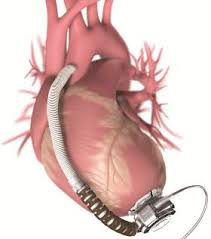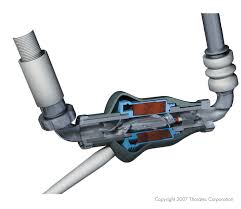 What is a Ventricular Assist Device?
What is a Ventricular Assist Device?
A ventricular assist device or VAD can be called as a mechanical pump, which is used to support the functions of heart and the flow of blood for people who have tender hearts. This device takes the blood from the heart’s lower chamber, which further supports the body in order to make the heart healthy.
What are the different ways Ventricular Assist Device?
There are basically two types of Ventricular Assist devices – the left VADs and the Right VADs. In case, if both the types of VADs are required in any heart it is then termed as biventricular assist device. One of the most common types of VAD’s is the left one, which helps in carrying the oxygen-rich blood from the patient’s heart to the body, while the right VADs are usually used on a short term purposes.
What are the benefits and risks of Ventricular Assist Device?
During the heart failures the heart is not often strong to pump blood inside your body as per its needs. When things are severe, heart transplant is the only option to get the survival of the man, while in the cases of mild ones, when transplants are not the option, then one can manage with devices like the VADs. These devices help the heart to function properly by assisting the blood supply in the entire body, which is generally hampered after the heart attacks. The benefits of these devices are that it saves life and improves the quality of life.
Is Ventricular Assist Device safe?
Living with VAD implanted in your body can be a stressful experience for many. This is primarily because people think that the device will stop working or can cause infection inside their bodies. However, for patients who would have their heart transplant in the future need not have to worry for obvious reasons. And even if you are not having the transplant, you are not supposed to worry, all you need to do is to take a couple of precautionary measures to allow its smooth functioning, which will further make the device safe for you.
Will I have to stay in the hospital after having a Ventricular Assist Device?
Once you get the VAD surgery, you often get up in the hospital’s ICU. You would need IV tube in order to find the fluid and nutrition. After the surgery, you are being monitored by the doctors for the way your body react after having the VAD inside it. The nurses would guide you to live with the VAD inside your body and you gradually resume to activities like sitting, walking going to bathroom and having regular diet. You will be instructed how to take shower while having the device without having any repercussions. So, you are supposed to stay for few days in the hospital before you are discharged for your home.
What should I expect after having a Ventricular Assist Device?
After staying for few days after the surgery, the patient is allowed to go home with his or her initial recovery. Your doctor will help you prepare for this transition you will get tips and instructions to follow, which will help you to recover fast from the surgery along with allowing the patient to live with VAD without any stress or worry. In the meantime, you are supposed to visit the doctor on a regular basis for the follow up rehabilitation. This will help the patient to avert the complication if any and get a faster recovery seeking the help of the doctor.
What are some important things I should know about recovery?
Once you go home, you are instructed from your doctor to take care of your health conditions along with having regular visits for the follow up sessions. You would gradually return to your normal activities of daily chores without adding any stress or worry about the surgery or the VAD implanted in your body. Regular checkups at least a month can help you in relieving from the stress and making you abreast with the conditions of the VAD.
You may also read
Ventricular septal defect – learn about causes, diagnosis and treatment methods
